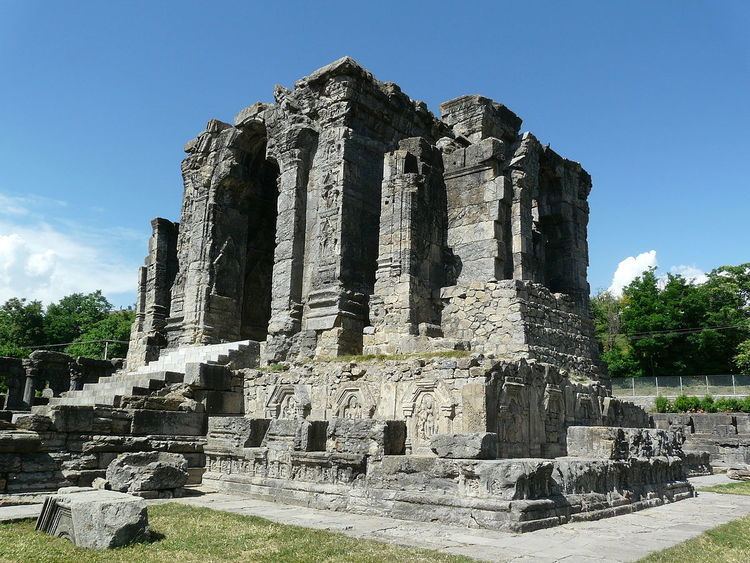Other names Martand Sun Temple | State Jammu and Kashmir Date built 8th century CE | |
 | ||
Similar Sun temple, Kheer Bhawani, Shankaracharya Temple, Lidder River, Hari Parbat | ||
The Martand Sun Temple was a Kashmiri Hindu temple dedicated to Surya (the chief solar deity in Hinduism) and built during the 8th century CE. Martand is another Sanskrit name for the Hindu Sun-god. Now in ruins, the temple is located five miles from Anantnag in the Indian state of Jammu and Kashmir.
Contents
- Martand sun temple thousand of fishes will move as you move amazing must wath
- History
- The Temple
- Present status
- Site of National Importance
- References
Martand sun temple thousand of fishes will move as you move amazing must wath
History
The Martand Sun Temple was built by the third ruler of the Karkota Dynasty, Lalitaditya Muktapida, in the 8th century CE. It is said to have been built during 725-756 CE. The foundation of the temple is said to have been around since 370-500 CE, with some attributing the construction of the temple to have begun with Ranaditya.
The temple was completely destroyed on the orders of Muslim ruler Sikandar Butshikan in the early 15th century, with demolition lasting a year.
The Temple
The Martand temple was built on top of a plateau from where one can view whole of the Kashmir Valley. From the ruins and related archaeological findings, it can be said it was an excellent specimen of Kashmiri architecture, which had blended the Gandharan, Gupta, Chinese, Roman, Syrian-Byzantine and Greek forms of architecture.
The temple has a colonnaded courtyard, with its primary shrine in its center and surrounded by 84 smaller shrines, stretching to be 220 feet long and 142 feet broad total and incorporating a smaller temple that was previously built. The temple turns out to be the largest example of a peristyle in Kashmir, and is complex due to its various chambers that are proportional in size and aligned with the overall perimeter of the temple. In accordance with Hindu temple architecture, the primary entrance to the temple is situated in the western side of the quadrangle and is the same width as the temple itself, creating grandeur. The entrance is highly reflective of the temple as a whole due to its elaborate decoration and allusion to the deities worshiped inside. The primary shrine is located in a centralized structure (the temple proper) that is thought to have had a pyramidal top - a common feature of the temples in Kashmir. Various wall carvings in the antechamber of the temple proper depict other gods, such as Vishnu, and river goddesses, such as Ganga and Yamuna, in addition to the sun-god Surya.
Present status
The Government of India has developed the site as an important tourist site with facilities. Martand Temple was selected as the background for the song Bismil, in the popular Bollywood movie Haider. In the movie the temple was shown as a place of evil. This partially led to the controversy surrounding the movie. Anupam Kher criticised director Vishal Bhardwaj for shooting the Devil’s Dance sequence in the temple, resulting in humiliation to Kashmiri Pandits.
Site of National Importance
The Archaeological Survey of India has declared the Martand Sun Temple as a site of national importance in Jammu and Kashmir. The temple appears in the list of centrally protected monuments as Martanda (Sun Temple).
